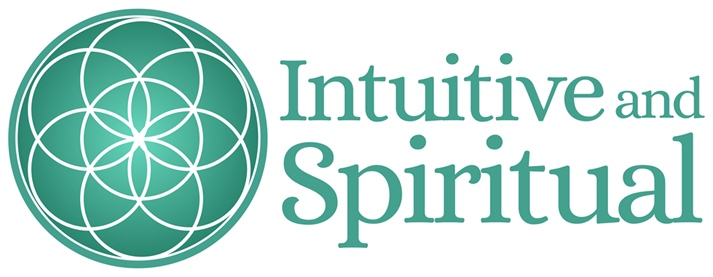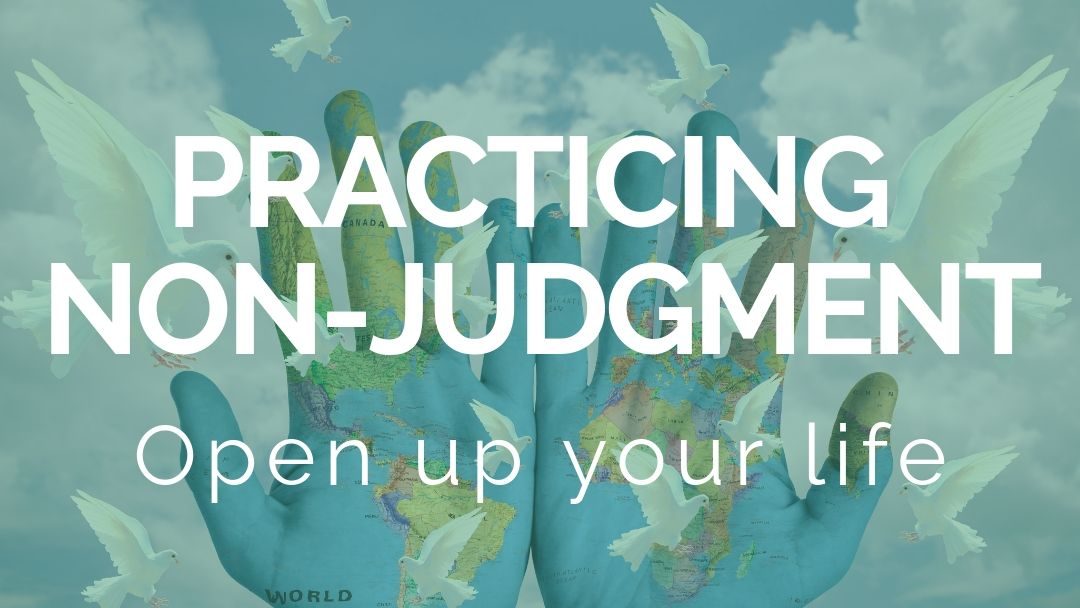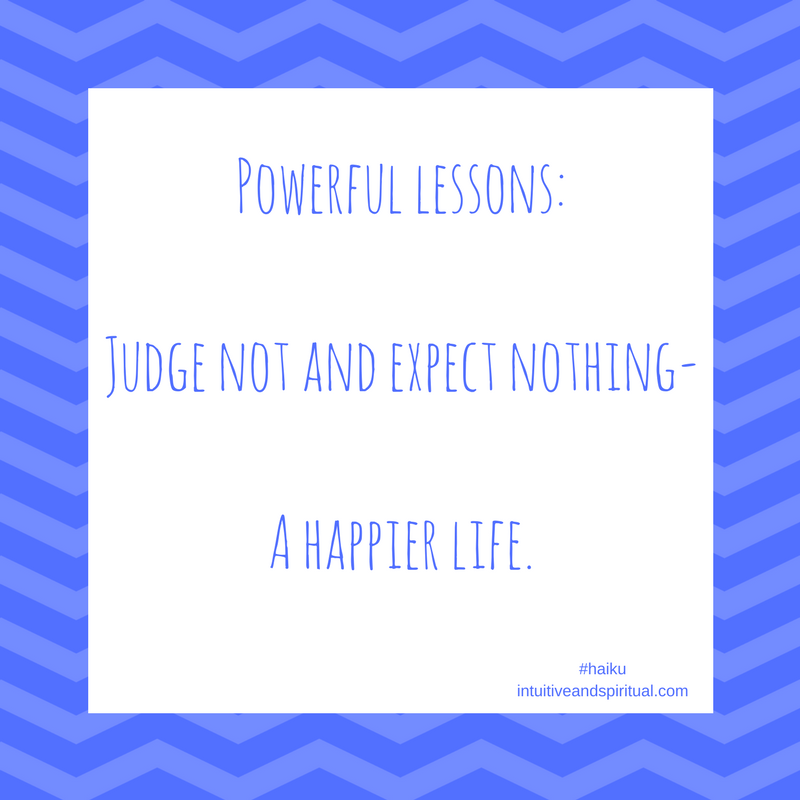Practicing non-judgment: living a life of clarity, presence, and beauty
I strive to live each day by practicing non-judgment, but I recognize that it’s the nature of the mind to think, and to judge. It’s what it does. But learning and living non-judgment opens you up to a lifestyle beyond measure. I also have the video version of this part of the post, as well as the guided meditation piece below.
Develop empathy and compassion through meditation
One of the most powerful benefits of meditation is that it helps develop centers in your brain responsible for empathy and compassion. This naturally leads to a decrease in judgmental behavior toward yourself and toward others.
Cultivating non-judgment also needs to be a conscious practice. Doing so brings peace, acceptance, as well as stress- or anxiety-relief.
Improving your thoughts
Sit for a moment and think about all the thoughts that go through your mind each day. They often are statements of opinion, usually about others, but often about yourself, as well.
Now think about this: are any of those thoughts positive? Are any of those thoughts centered around gratefulness for who you are? That’s great if you have positive thoughts and do this already. But now think about how many positive thoughts you have compared to negative ones. It’s so easy to judge your body, your mind, your actions…
It’s often easier to see the positives and compliment others before we ever think to compliment ourselves, as well.
Non-judgmental attention
If you meditate, you’re probably already seeing in your meditations how, as thoughts come, there’s a certain amount of acceptance for what IS, and then you let them go. (Don’t worry if you’re not, yet. It’ll come.) Sure, another thought might scoot in right after you’ve let that first thought go, but it is that acceptance, knowing that you must exercise non-judgmental attention, to have better meditations.
Practicing on-judgment isn’t about thinking positively…or negatively. It’s taking each thought, action, situation, word, event, or whatever comes, as it comes. If you think about it, every moment just is. Judgment happens when we attach ourselves to the outcome. If we can learn to unattach from the expectation of a certain outcome, we can let go of a lot of judgment.
A personal story about judgment
I’m going to tell you a very personal story about judgment.
My beautiful half-sister and I didn’t grow up together. I was adopted by my grandparents and my sister stayed with my real mother. Without going into all the ramifications of our different upbringings, early on, I had set an intention to lead a well-lived life. I wanted the same for my half-sister. When she was in college, she got pregnant. She went on to have four more children, while I decided to remain child-free to focus on doing things like learning meditation and doing the inner work so I could make a difference in the world. And oh, I judged her so harshly for her decisions. I thought she was going to repeat “the cycle,” you know? I didn’t understand her motivation and assumed that I would never be able to relate to her.
It was through meditation, through loving kindness as well, that I realized how judgmental I’d been. I’d all but shut her out of my life because of my expectations of the outcome I wanted for her!
Well, friends, it turns out she knew exactly what she wanted. She’s a beautiful mother, and displays such love for her family. I realized how judgmental I’d been. I apologized and we’re forging ahead with a new relationship based on love and trust. Without this mindful meditation journey, I would not have come to see how attached I was to the outcome I wanted. When I begin practicing non-judgment, and accepted her for who she was, our relationship blossomed.
Let go of the outcome
When we attach to an outcome, that’s when all our opinions come flooding our mind of how this or that should be. For example, when you’re on the side of the road with a broken-down car, your attachment to the outcome of that situation determines how much you’ll suffer. The outcome you probably wanted is that you reached your destination, arrived at home, or arrived at wherever you were headed.
I broke down once near a teeny, tiny town in Kansas. The auto parts store had to special order the car part I needed and would be 24 hours. I had my bicycle with me and I decided to tour the town which took all of five minutes. So I kept going and saw green, rolling hills and a part of Kansas I would never have seen otherwise. The people at the hotel clapped when they found out my car got fixed.
The point is, what if you looked at events like this as just another event on your timeline, and let go of the outcome you wanted?
It’s all in how you look at things
Perhaps this event prevented you from living a less desirable outcome. For example, maybe breaking down in the small town prevented me from having engine failure down the road, or worse, getting into a collision. Still, letting to of an unexpected outcome will help you meet someone whom will have great importance in your life. I didn’t know it at the time, but my future husband was with me to fix the car when I broke down. Perhaps it’s an exercise in patience. It’s all in how you look at things.
A meditation practice can help you to become an observer of your thoughts and not be your thoughts and not be attached to a certain outcome. To not get so involved that you can’t see yourself outside of the situation. And, of course, bad things do happen in life. But practicing non-judgment and meditation will help you come back to your center more quickly, with less emotional after-effects.
Keep coming back to the breath
I have lived that, too. When my oldest brother perished in a car accident, my meditation practice was going strong. Through the funeral and in the wake of those events, I kept returning to the breath, and to my mantra. People asked over and over how I seemed so calm. How I stayed so composed.
You know the answer.
I created a guided meditation to help you work on your own non-judgment. The video and script are below. If you try it, let me know what you think in the comments. If you haven’t already, please subscribe to my channel over at YouTube, as well. You get to see the videos before I publish the posts over here – and get a head start on what’s coming up for the week. 🙂
Practicing Non-judgment Guided Meditation
Beginning the practice
As you begin the practice of non-judgment, check to be sure that you won’t be disturbed. If you have pets, gently shut them out of your meditation area so they will not disturb you. Let family members or roommates know not to disturb your meditation until you are finished.
You may sit in a chair with your feet flat on the floor, or on a cushion – wherever you are comfortable. Just be sure the position you find is one that you can maintain long enough for this meditation. Be kind to yourself. If you find that you need to shift, do so with mindfulness and calm.
When you meditate, know that it’s okay to have thoughts. Welcome them. Meditation shouldn’t be a strain. Don’t try too hard. Just bring your gentle, nonjudgmental attention back to this meditation practice when you find your thoughts have taken you on a tangent.
Let go of any expectations. You have come to your chair or cushion. Let yourself settle into this practice to benefit from this time of calm and silence. Be sure that once you begin this meditation, stick with it until the end.
Bring your attention to the breath
Close your eyes, or cap them halfway, with a soft unfocused gaze.
Bring your attention to the breath. Become aware of your normal breathing pattern. Do not change it or breathe more deeply, just observe the in and out motion of the breath.
Now begin with three long, slow deep breaths. Breathe in for a count of 4, hold for 7, and breathe out for 8. At the end of each breath, pause for a few seconds on that moment of silence.
Let your breathing return to a normal rhythm.
Thoughts are part of meditation. Remember to be kind to yourself.
Judgmental thoughts
Gently recall a thought you’ve had about yourself today that was judgmental. It need not be anything too harsh. Remember, be kind to yourself.
Take a breath. In and out.
Now let that judgmental thought dissolve with the breath. Breathe. As you exhale, let that thought go. Don’t try too hard.
Begin to re-frame the thought you let go. See the beauty of who you are behind it.
Become an observer.
Watch yourself, the beautiful human that you are. You, who contributes to the world with your presence.
Gently tell yourself: “Let it go. Be kind to yourself. Let it go. Come back to the breath.”
Breathe.
Observe.
Let…go…
Empathy, Love, Compassion
Now, send yourself a little empathy, love, and compassion. Repeat the following phrase, silently:
May I be surrounded by love and kindness.
May I be surrounded by light and peace.
May all those with whom I come into contact be surrounded by love, kindness, light, and peace.
Return your awareness to the breath. Observe your normal breathing pattern.
Ending the meditation
Keep your eyes closed or capped as you near the end of this meditation.
It’s important to come out of meditation slowly.
Keep your awareness to the breath. Continue to feel the in and out rhythm…the rise and fall of the chest.
On your next inhale, allow the fingers and toes to wiggle if you wish. Move your arms and legs gently as needed.
When you’re ready, open your eyes with a soft downward gaze. Keep your focus inward, on the breath.
Open your eyes when you feel ready. You may carry this peaceful, relaxed feeling as you return to your day.
In closing, here is a little haiku to take with you:



Thanks for sharing your tips and process to practice non-judgment. And kudos on practicing in your life and repairing your relationship with your sister.
Hey there, brad. Thanks for coming by and reading. 🙂 I hope your new job is going well – I’ve been hoping you’re adjusting to it just fine. Yes, I am always a work in progress: evolving and learning and trying to move to the highest version of myself. It is a journey, no? Have a great week!
Thank you Cynthia. Yes, we’re all works in process. Work has been challenging so far, but I hope to make adjustments.
My entire comment disappeared before my very eyes….GRRRRRRR!
Gotta run now….hugs Lil Sis!
Big Bro: I am sure your first comment would have made me smile, and it would have been full of your wonderful insights. I’m sorry it disappeared; that’s frustrating. I think it was because of an issue I was having with some core files on my site and I think that because I was working on it at the exact same time as your comment coming through, cyberspace ate it up. sigh But please know I appreciate you and I wish you a wonderful week! Have fun with all those chickens! 🙂